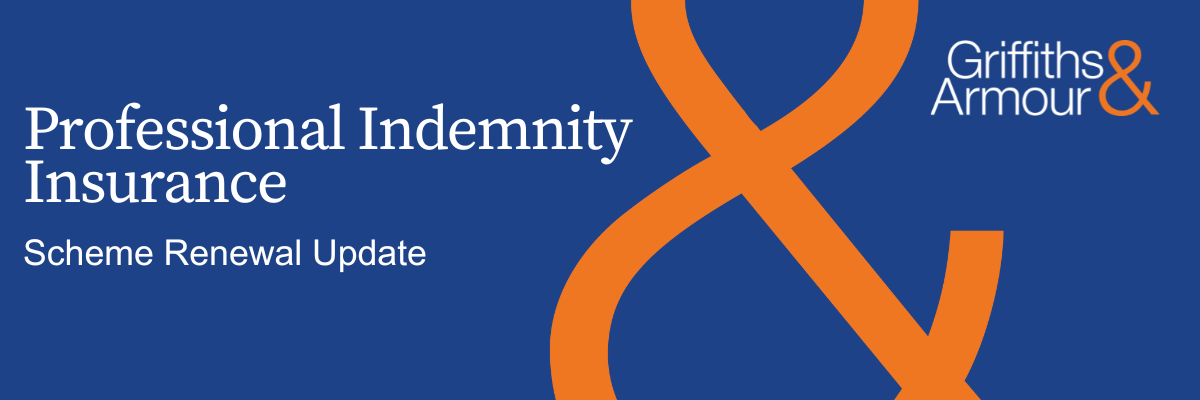After an extremely challenging few years, it feels to many of us involved in this area like the Professional Indemnity (PI) insurance market is now in something of a holding pattern, as insurers assess the impact of their underwriting actions on the overall performance of their PI portfolios and as we still wait for the outcome of, and reaction to, the Grenfell Inquiry.
These uncertainties aside, the fact that the market has stabilised and that underwriters now have more underwriting freedom will come as welcome news to those who have been at the sharp end of those underwriting actions. At this point, however, a significant shift in appetite from the established market and the prospect of coverage for fire safety risks returning to its pre-Grenfell state still feels some way off.
As we renew our construction Scheme facilities for 2023/24, we set out some of the market dynamics and what developments we can expect through next year.
Background – where have we come from?
To understand the backdrop against which 2024 will be set, it’s important to remind ourselves of the roots of our recent challenges and why, in 2018, PI was cited as the second worst performing class of insurance. We’ve previously reported on the systemic issues that existed within the insurance market, where an oversupply of capital led to poor underwriting behaviours; insurers focused on building market share rather than the profitability of the business they were underwriting. Those failures were inexcusable, and it should have been evident to anyone with even a basic understanding of the insurance market as a text-book example of how insurers can get themselves into trouble, with resultant difficulties for many of their insureds.
At the same time, there were many other ingredients in the mix. Allied to the difficulties being experienced in the insurance market was a perceived deterioration in the risk profile of the construction professions, with:
-
- Firms being required to do ‘more for less’ under increasingly onerous contracts;
- An uncertain and potentially more onerous legislative landscape in the UK in the form of extended liability periods and the potential for the introduction of a ‘strict’ liability regime under the Building Safety Act;
- Demands for ever increasing levels of PI insurance;
- A trend towards higher value claims; and
- Increased exposure arising from the failure of other parties and the application of the joint and several liability principle.
Where are we now?
Today, fewer firms are going to face that existential threat of not being able source any PI insurance cover. The level of underwriting scrutiny and the actions imposed by insurers in recent years have given them a degree of comfort around the risks they hold and there is some evidence of an increase in market capacity overall.
In that sense, it could be said that the market has ‘settled down’ but at a level that many will see as painful in terms of premium and coverage. We shouldn’t forget that many insurers have introduced wide-ranging restrictions that create a real gap between the potential risk exposure construction professionals are facing and the cover afforded under their PI insurance arrangements. Certain sectors will also remain particularly challenging with insurers continuing to look closely at risk and claims profile.
Any increase in market capacity also brings with it a question on motivation and particularly so when it comes to new entrants. No one wants to see a return to the poor behaviours that drove the hard market conditions and, as is so often the case, individual firms and their insurance brokers need to ask some simple questions about the insurers they choose to work with:
-
- Are they here for the longer-term and is that evident from their structure and resourcing?
- Do they actually understand the risk?
- Are they providing an appropriate and sustainable specification of cover?
- What’s their track-record on claims handling?
- Are their behaviours consistent with those of a prudent underwriter?
If the past few years has demonstrated anything, it’s the importance of making good decisions on insurer selection, trying to build sustainability into your PI programme and ensuring that you are well placed to withstand whatever the future holds.
And what about the underlying risk?
The future is far from certain. It’s remarkable to reflect upon the last few years – inflation, interest rate rises, the UK’s exit from the European Union, war in Europe and the Middle East, unprecedented challenges on climate change, the Grenfell tragedy (and the lessons that are yet to be fully understood), changes in legislation and the introduction of the Building Safety Act, which will be of relevance to those working in the UK. These issues all raise serious questions for insurers around the likely impact on construction professionals.
As we have reported on before, particular uncertainty surrounds the outcome of Sir Martin Moore-Bick’s report into fire at Grenfell Tower and what this might mean for the construction and the insurance sectors. His findings on the failings of the construction industry, Government and the manufacturers of materials will do much to shape the legal landscape against which the extensive backlog of claims relating to the fire safety of buildings will be litigated. What shape this landscape takes is a key reason that the majority of the litigation around fire safety issues is yet to commence in earnest. Only once the report has been published, digested and the first cases start to work their way through the system, will we understand the likely impact.
In isolation, the uncertainty surrounding this point alone would mean that we need to do more than just wait for the market cycle to turn, but when considering the other features we’ve experienced in recent years that’s why we feel we need to focus on tackling the underlying risk.
The ‘green shoots’ of an uplift in PI market capacity is welcome but it’s a function of the usual market cycle and the underwriting actions taken in recent years. Critically, those green shoots have not grown because of fundamental change in the risk profile of construction professionals. And without that change, we are not going to achieve the kind of PI market conditions that those with a long-term market interest wish to see.
So, what are we doing about it?
At Griffiths & Armour, we’re committed to achieving real change and to delivering a more sustainable PI market. As well as helping our clients navigate through the challenges of the last few years, we’ve continued to invest considerable time and resource into advocating on their behalf – working with industry bodies, Government and other stakeholders to improve the commercial, regulatory and legal environment our clients are operating in. We are about to launch a project which has seen us, in collaboration with many others, gather and distil opinions and ideas on some of the key problems in each area and more importantly to suggest ‘strawmen’ solutions to move this forward.
Those efforts are beginning to gain traction but much more needs to be done to achieve the fair risk -v- reward balance that’s required to:
-
- Underpin a sustainable consultancy sector; and
- Deliver a stable and competitive insurance market.
What is needed is a more resilient model that can serve the interests of all parties into the future.
The 2023 Scheme Renewal
So, what does this mixed picture mean for the renewal of our construction scheme facilities? We are pleased to report:
-
- Our insurance panels are unchanged. AXIS and Arch will continue to lead off our blue-chip panels of quality insurance markets. This is welcome stability after recent upheavals but, importantly, that stability is allied to a recognition that the market is undergoing change.
- Consequently, clients can expect to see more flexibility returning to their individual insurance renewals and our insurance partners will look to support us in ensuring clients benefit from whatever flexibility is available, whilst maintaining the stability of our proposition for the long term.
- The policy wordings that have been a cornerstone of our Scheme facilities for generations have been refreshed and updated. Whilst they are acknowledged as an industry leading solution for professionals working in construction, they were guilty of being written in a style that previous generations would all too easily recognise. We have worked with our insurance partners to produce a fresh suite of policy wordings written in a modern, more accessible style, but critically losing none of the protections that we and our clients obviously cherish. So, whilst you will notice that the documents are easier to follow and that the key information on coverage is easier to find, they are underpinned by the reassurance that there are no changes to the cover that is offered.
Despite the challenges faced in recent years, there is no doubt that we have been sheltered from the more extreme reactions seen elsewhere in the PI market. From renewal discussions with our insurance partners, it is clear that we are now in a strong position with 2024 promising to be a year in which our clients will:
-
- continue to benefit from the necessary, albeit at times difficult, decisions made in previous years,
- experience a more flexible underwriting approach, and
- see insurers better placed to recognise the nuances and complexities of individual firms.
Whilst the positivity that approach will bring to our collective discussions over the next year or so is something to look forward to, the potential for us to be blown off-course next year by one or more of the challenges outlined above remains significant. That is why we will continue to work with like-minded people everywhere to try and ensure that the legal environment in which those challenges will be addressed is one which is fair.






